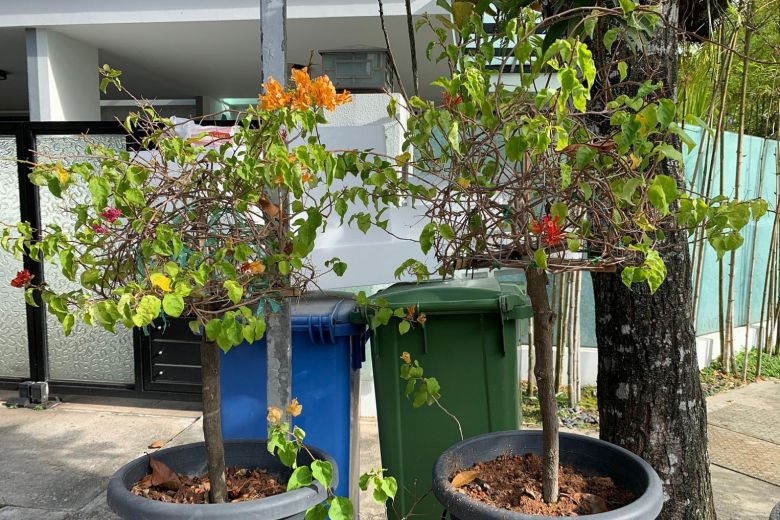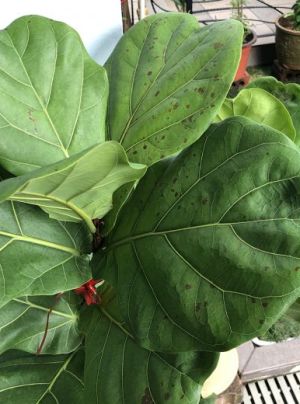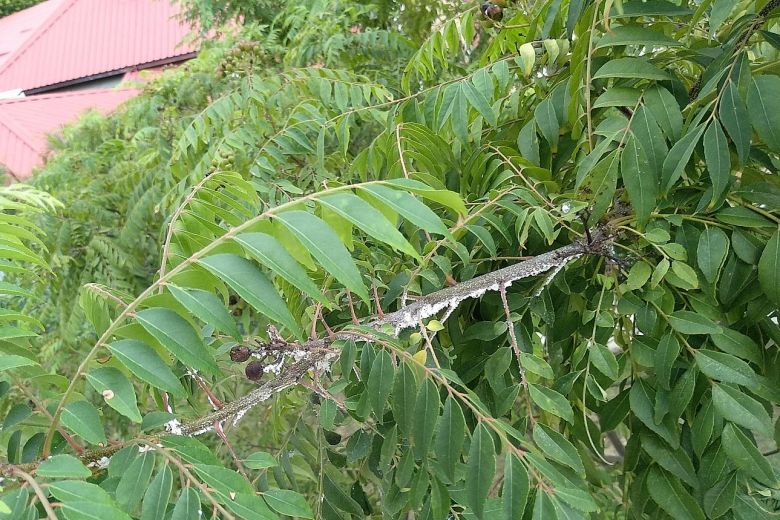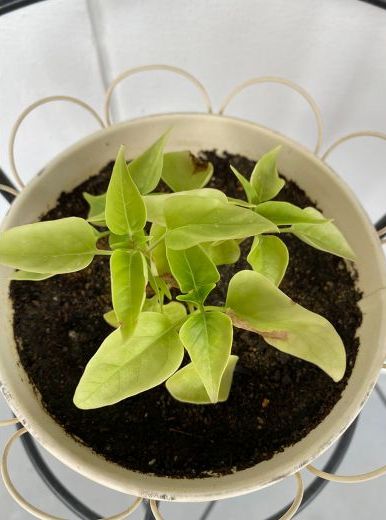Gardening FAQ #5 – What You Need To Know
Bougainvillea needs sun and sufficient water to thrive

When I bought these plants several months ago, they had many blooms. They do not seem to be doing so well now. How can I help the plants thrive?
The plants are bougainvillea. It appears that the two pots are under the canopy of a tree, so they are in a shaded location.
These plants do best when they get full sun. After flowering, you may want to prune weak and leggy growth. Fertilise the plants with a flowering fertiliser to promote flowering.
Although it is well known that bougainvillea does better under drier conditions, it is not recommended to let the plant dry out totally until its leaves wilt, turn yellow and fall off. Such extreme stress can set plants back badly. If possible, water the plant regularly and let the soil dry out slightly before watering again.
An alternative that you can consider is to get growing tents which are purpose built rooms for growing plants indoors. In this tent, you can control the amount of grow lights, plan the watering and more. Read our post on best growing tents to help you select the best ones.
Spots on fig may be secondary infection
 Recently, my plant has many black spots on the upper sides of its leaves. Are the leaves burnt due to overexposure to the sun or is it due to a bacterial infection? What is the name of this plant? Is it an indoor or outdoor plant? Would it grow into a small tree and do I need to move it to a bigger pot?
Recently, my plant has many black spots on the upper sides of its leaves. Are the leaves burnt due to overexposure to the sun or is it due to a bacterial infection? What is the name of this plant? Is it an indoor or outdoor plant? Would it grow into a small tree and do I need to move it to a bigger pot?
The plant is called the Fiddle-leaf fig (Ficus lyrata). Although often sold as a houseplant, this species can grow into a large tree and it grows best under direct sunlight. Placing it in a pot can restrict its growth in the short term.
From the characteristics of the black spots, the plant may be having a bacterial infection. It could be self-limiting as it does not seem to be spreading to all parts of the plant.
Was the plant initially under shade and then moved to a brighter area? This move could have caused the leaves to be burnt and the wounds subsequently infected by pathogens on the leaves and in the environment.
Plants grown in a shady location for some time should be moved gradually to adapt to higher light levels so that the leaves can acclimatise. The spots could also be a result of injury caused by chemicals or fertilisers. The leaves of some plants can be sensitive to certain chemicals.
Damage can also happen if a foliar fertiliser that is too concentrated has been applied. Test such fertilisers on a small part of a leaf before applying it to the entire plant. Also, if there are ongoing works involving industrial chemicals near the plant, you may want to move it away or put a plastic sheet over it to protect it from harmful droplets.
Damaged portions of a plant can invite infection by plant pathogenic microbes in the environment.
You can also read our post on Best Grow Bags: Honest Reviews + Buyer’s Guide for others ways to improve this situation.
Curry tree may have mealy bugs

What plant is this? It grew in my garden and is now a small tree. It has small berries birds used to eat. Recently, a whitish growth appeared and infected almost all the branches, and the berries shrivelled and became black. The growth attracts ants too. What is this growth and how do I get rid of it?
The plant looks like the curry tree (Bergera koenigii) and its leaves are an important ingredient in Indian curries. The plant produces fruit which are consumed by birds and dispersed via their droppings.
The white, cottony mass appears to be mealy bugs – sap-sucking insects that can weaken your plant. You can use a strong jet of water to wash the pests off.
Apply summer oil or neem oil, which can be bought from nurseries, according to the manufacturers’ instructions. Such pesticides suffocate sap-sucking pests. Repeated applications are needed to ensure the pest population is kept under control.
For suggestions on how to control another plant worst enemy, head over to our section on Weed & Moss Control.
Four O’clock flower seedlings may need fertiliser
 I grew this plant from seeds. I was told it usually blooms in the evening. It seems to have stopped growing and the leaves look “burnt”. What plant is this? What is wrong with it?
I grew this plant from seeds. I was told it usually blooms in the evening. It seems to have stopped growing and the leaves look “burnt”. What plant is this? What is wrong with it?
From your description and picture, the seedlings are likely those of the Four O’clock flower (Mirabilis jalapa). The plant is named as such due to its flowering habit where the blooms open in the late afternoon or early evening.
From the appearance of the leaves, your plant is lacking in nutrients.
Check the pH level of the growing media and ensure that it is in the optimal range for healthy growth. Also, you may need to fertilise the plant if you have not done so.
You may want to move the plant into a larger pot with fresh media. You can also read our post on Best Grow Bags: Honest Reviews + Buyer’s Guide for ways to improve this situation.